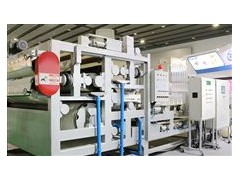The challenges facing the printing industry in the DACH region, which includes Germany, Austria and Switzerland, are similar to those in other parts of Western Europe. Multiple geopolitical crises, continued high energy costs and the resulting inflation and interest rate increases are making the market uncertain - which also directly affects the printing industry. The challenges facing the printing industry in the DACH region are similar to those in other parts of Western Europe. Multiple geopolitical crises, continued high energy costs and the resulting inflation and interest rate increases are making the market uncertain - which also directly affects the printing industry.
This is reflected in private consumption and investment behavior, as well as in the continued consolidation of the industry. In addition, the printing industry is facing a huge labor shortage. Further automation measures, comprehensive digitalization and networking of production, and the increased use of robotics and artificial intelligence solutions are all attempts to combat this problem.
However, the printing industry's pie is also getting smaller, as printing is increasingly being replaced by digital media. This is a very difficult and chaotic situation, and it will continue to be so. In addition, the development of the industry has been decoupled from the industrial sector for many years. Swiss data speaks clearly here. In the third quarter of 2023, the production value of the entire industry reached about 117% of the level at the beginning of 2019. In the graphic arts industry, the corresponding production level is around 83%, and recently it has even been less than 81%.
If one wants to understand how the industry in the DACH region has changed in recent years, the consumption of flat paper is a good indicator. Over the past 20 years, it has almost halved. According to Euro Graph, 2023 was a particularly difficult year for the flat paper sector - compared with the previous year, the decline in Europe was as high as 24%. As stocks were depleted and paper prices fell, demand started to pick up again in early 2024. By the end of April, demand for uncoated paper had increased by 15% in Germany and Austria and by 11% in Switzerland. In the case of coated paper, the growth in Germany and Austria was as high as 18%, while Switzerland only recorded a decline of 3%.
However, this initially reassuring development cannot conceal the fact that print volumes are falling sharply. The industry was able to increase prices, by around 9% in Switzerland. However, in many cases this was not enough to compensate for the increased costs for paper, energy and personnel. The 10.9% increase in turnover in the German industry in 2022 was also driven solely by inflation.
The huge increase in paper prices has prompted many companies to rethink their commitment to print advertising, or to exit altogether. Many advertisers are turning even more strongly to the major digital players. Alphabet's total revenue alone is set to rise by 9% from 2022 to 2023 to $307 billion, with a large portion of that attributable to digital advertising. According to iab austria, the digital advertising market in Austria already generates more than 2.2 billion euros. Three-quarters of that goes to global platforms. That's a sizeable chunk of total ad spending of more than 7 billion euros, according to estimates from the Austrian Advertising Market Study for 2023. The figures for Germany are even more dramatic. According to the German Print Media Association, online advertising accounted for 46% of ad revenues in 2022.
Nowadays, everything can be printed, except water and air. That is why we should also consider processing other substrates besides paper and board, with which we can reach a completely different world of applications. For example, textile printing or object printing can be used to serve the interior design market, which will allow you to reach a completely new customer base. Other examples are labels or packaging. With the advent of digital printing, the barriers to entry have been significantly lowered.
Of course, it is not enough to just install the technology; the corresponding expertise must be built up or brought in. Market entry also requires a sales approach supported by customized marketing. Sales can also be supported through an online store. But you don’t have to do everything yourself. Establishing partnerships would be an equally effective approach, where everyone can contribute their individual strengths.
There are still opportunities in the production of personalized content or on-demand production, which can eliminate storage costs or overproduction. The potential is far from exhausted. With existing digital printing systems and customized post-processing solutions, the technical requirements are in place. Examples include production scenarios such as book-by-book or photo album production. Each product differs in content, format and number of pages – this is mass customization at its best. To score here, of course, you need expertise in data processing. From the perspective of the online world, a piece of paper becomes the "flattest flat-screen TV in the world." In digital printing, this can be personalized and customized just like an electronic screen.
2024 will certainly be a key year for the entire printing industry – not just in the DACH region – when the future direction will be clearly seen. Creating new revenue sources is not easy; it requires courage and persistence in any case. However, standing still and mourning the good old days is not an option for managing change either. Market and customer needs dictate the pace. There are certainly opportunities to develop new business areas. You won’t know if you succeed until you actually try! Or to quote Henry Ford: “If you always do what you already know, you will always be what you already are!”







